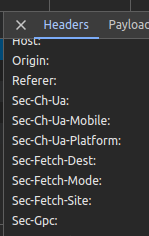I am trying to make a POST call to Django from a React Native Web front end on different subdomains.
I thought I had configured CORS correctly, but that does not seem to be the case.
Here's what my Django settings.py looks like:
CORS_ALLOW_CREDENTIALS = True
CORS_ALLOW_HEADERS = ['*']
CORS_ALLOWED_ORIGINS = ['https://api.example.com', 'https://example.com', 'https://www.example.com' ]
CSRF_TRUSTED_ORIGINS = [
'https://api.example.com', 'https://example.com', 'https://www.example.com'
]
ALLOWED_HOSTS = ["0.0.0.0", "api.example.com", "example.com"]
MIDDLEWARE = [
'corsheaders.middleware.CorsMiddleware',
'django.middleware.common.CommonMiddleware',
'django.contrib.sessions.middleware.SessionMiddleware',
'django.contrib.auth.middleware.AuthenticationMiddleware',
'django.contrib.messages.middleware.MessageMiddleware',
'django.middleware.clickjacking.XFrameOptionsMiddleware',
'django.middleware.security.SecurityMiddleware',
'django.contrib.flatpages.middleware.FlatpageFallbackMiddleware',
]
INSTALLED_APPS = [
...
'corsheaders',
...
]
What exactly am I doing wrong here? The error I'm getting is this:
Access to XMLHttpRequest at 'https://api.example.com/api/v1/pagescreate/' from origin 'https://example.com' has been blocked by CORS policy: No 'Access-Control-Allow-Origin' header is present on the requested resource.
And this is my Django view:
class PageCreateView(generics.CreateAPIView):
queryset = Page.objects.all()
serializer_class = PageSerializer
What could be causing this? Am I missing some setting in React? I'm using axios to make the calls, with the only header being "Content-Type": "application/json"
EDIT: Could this be due to some nginx rule on my server? Or maybe my Kubernetes configuration? I am using Docker to set it up the container and can easily link the Dockerfile, or any information from my Kubernetes setup


reactit may be a missing header issue – Gametocytehttp head https://api.example.com/api/v1/pagescreate/? Thehttpcommand comes with thehttpiepackage. Also, since you mentioned you are using nginx, can you post the output from making the request directly against your django server and also after it going through nginx? – Northwest